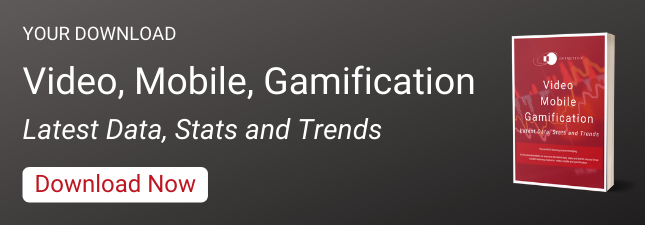36 Learning Trends from the Past Decade
During the last 10 years, the world of learning & development has changed rapidly year-on-year. From the redefinition of learning spaces in 2010 to better alignment between C-suite executives and HR/L&D managers in 2019, the corporate education landscape is now a completely different space compared to previous times.
Below you will find 36 learning trends which have taken shape since 2010, forming the current learning landscape and likely to be contributors to future movement in this area.
2010
1 Redefinition of Learning Spaces
Learning spaces transitioned from traditional classroom methods of teaching towards workshop-like environments. In conjunction with this, the ‘lessons’ changed toward more interactive methods of discussions and collaborative learning.
2 Teacher Managers/Mentors 
Managers started to become more and more like teachers. Employees began to see their managers as mentors and realized the potential for learning from them. Additionally, managers began to see themselves as responsible for their subordinates learning.
3 Better Simulations and Models
With advances in software and technology, learners expected bigger and better forms of simulations. Improved software that was readily available demonstrated and explained concepts far easier than before.
4 Better Assessment
Similar to the above, models and simulations were more than just a tool for teaching methods, they enabled teachers to gain feedback on how students understood them and areas that needed improvement.
2011
5 Immersive/Tactile Design (touch, sound, movement)
In 2011, eLearning content progressed toward a richer media experience. Content emerged that displayed visual richness, innovative design and sophisticated scenario design. This immersive experience was integrated into 2011’s learning management systems.
6 Rapid eLearning
Speed became a priority, with organizations in need of flexible solutions and minimal wait times. The ability to edit (along with the need to replicate) models, templates and assets proved valuable this year.
7 Mobile Learning
The growth of smartphone usage led to significant developments in mobile learning delivering a variety of content from quizzes to performance support.
2012
8 Personal Learning Environments
Training organizations that were savvy enough to develop personalized web portals to create a more personalized learning experience would benefit hugely in the coming years post-2012. These portals allowed organizations and eLearning providers to create integrated and versatile learning solutions. Such demands are now key requirements for modern clients and employees and are necessary capabilities for providers.
9 Formalizing Informal Learning
Some LMS providers experimented with creating platforms that allowed users to comment and share knowledge to formalise informal learning. These modern internal chat rooms were not perfected in 2012 and are still being experimented with due to demands to improve knowledge transfer within organizations.
10 Gamification
In 2011, Gartner predicted by 2015 more than 50% of organizations would have some form of learning gamified by 2015 and they were right for the most part. eLearning rode the gaming trend that swept social media platforms such as Facebook. 2012 was a year when providers really began to see the potential of gamification to create a valuable user learning experience. Gamification has since stayed relevant and should become more prevalent as digital natives who have been gamers all their lives populate large proportions of the workplace.
11 Social Badging
Certificates and accreditations that could be shared online became popular in 2012 as a new generation of workers entered the workforce. This trend has continued far beyond 2012 and is still very popular with individuals keen to display achievements to enhance their personal brands on LinkedIn.
12 Onboarding
eLearning became a key focus in attempts to modernize onboarding programs to improve the initial experience of new hires. Talent retention concerns meant organizations started to see onboarding as a chance to create a positive first impression which is vital for talent retention. This process is set to grow from 2020 onwards as organizations seek to meet the L&D demands of modern workers, improve retention rates, and build more flexible staff.
2013
13 Social Backchannels
Social Backchannels allowing learners to communicate with each other during a live presentation, creating a knowledge-sharing community, came to the fore in 2013. This encouraged all learners to actively participate in their learning, expanding diversity in ideas and thoughts to create a holistic learning experience.
14 Crowdsourcing
Crowdsourcing in learning, and in particular eLearning, is the process of pitching a question to a large group of people, in pursuit of feedback and constructive criticism about a course you have created. In 2013, crowdsourcing became an effective method of receiving multiple opinions to help someone in their endeavours to create the best course possible. Access to such groups can be done directly, through e-mails, or posted to wikis or various other social networks.
15 Tablet eLearning
Tablet usage for media consumption grew in importance in 2013, with sales of tablets expected to outstrip that of notebook PCs in the same year. The total expected volume of units sold worldwide by the end of 2013 was 240 million. This was likely due to policies such as BYOD (Bring Your Own Device) being introduced in various workplaces.
2014
16 Learning on the Go
As more and more professional educators (and even students) experienced the “long nights, shorter days” phenomenon, the need to immediately assimilate information was deemed a defining factor in how we learn. To meet these needs, educators began to design tutorials or teaching materials that were mobile-friendly and could be downloaded on tablets, phones, and a variety of smart devices. Since 2014, the world has switched from a desktop-first approach to content development to a mobile-first approach. The rapid uptake in smartphone usage has led to more and more learners accessing their learning content on-the-go on their mobile.
17 Massive Open Online Courses
Massive Open Online Courses (MOOCs) became increasingly popular leading up to 2014, mainly due to their accessibility, as well as the fact the courses are generally offered free of charge. The hype surrounding MOOCs died down a bit in the intervening years, as providers struggled with low completion rates among those who started courses. Completion rates are now improving greatly with the use of mentors and teaching assistants, so while MOOCs may not be as world-changing as once predicted they will play a large role in learning & development in the future.
18 HTML5
HTML5 supports scalable vector graphics, which, in 2014, meant eLearning content could be made responsive to the learner. According to a prediction by Gartner, improved JavaScript performance began to push HTML5 and the browser as a mainstream enterprise application development environment. The use of HTML5 is now standard in eLearning content development and the use of Flash has been almost entirely phased out (support for Flash will end in December 2020). This has led to the development of responsive and more engaging learning content.
2015
19 Augmented Reality
Augmented reality includes virtual reality, information superimposed in a user’s physical space (for instance, information pop-ups about what you are seeing), and 3D environments, among other features. Oculus Rift is an example of the many devices that were becoming popular in 2015. The user of such gadgets can experience learning in a collective and dynamic way, being brought into the immersive world instead of being offered an overview as permitted by video. Since then, AR has found success in industries where it is applicable (e.g. high-level training for engineers in the energy industry) and achieved some widespread commercial success (Pokémon Go in 2016). It is now a standard feature on most smartphone camera apps, and its use in the learning industry should continue to grow.
20 Cloud Computing
In the eLearning field, cloud computing is mainly applicable to learning management systems. With this, in true terms, SaaS (Software as a Service) LMS gained importance, as there was only one version of the LMS available and every client had its own, highly-secure area and data. The SaaS model has exploded in popularity since 2015, with virtually all LMS providers having migrated to this model in the last few years. This has allowed for much more versatile and agile systems being developed, with additional features being released on a continuous basis.
2016
21 Cloud-Based Systems
Many LMSs and authoring tools were being hosted “in the cloud” as the rise in popularity of corporate training encouraged even smaller organizations to get on board. Data security became a major issue, however, the handling of sensitive data in the cloud was becoming safer thanks to advanced encryption measures.
22 Personalization
Big Data increased in value as it allowed eLearning to address the individual’s needs, requirements and preferences over a “one size fit all” approach. From learning environments to pedagogy, all varying elements that are considered when producing eLearning courses were predicted to be tailored to encourage, inspire and motivate individual learners over the collective.
Personalized learning allowed learners to take control of their own learning. It allowed the learners to have a thorough understanding of what they learn, in the way they want and also give them the freedom to co-design the curriculum. Analytics were mostly handled through Artificial Intelligence (AI) subsystems.
2017
23 Educational Technology Developments
A huge influx of investment occurred in the educational technology training space – such spending saw huge strides being made in the areas of content development tools, content libraries, content delivery, virtual training, digital readers, and cloud-based administration systems. Learning technology will continue to be an area of heavy investment over the coming years as providers seek to cater to the growing L&D demands organizations face.
24 The Rise of the Learning Library
In 2017, solutions began to focus more on the user experience and a central point learning materials was necessary to improve this. 2017 saw learning libraries grow in importance as organizations sought to purchase large catalogues of content to cover the learning needs of workforces that was going through wide generational change.
25 Providers Adopting a Marketing Based Approach
L&D solutions providers began to take a marketing-based approach to their offerings. They sought to understand the needs of learners more. This was largely due to developments in data analytics and the subsequent ability for providers to fulfil the unique learning challenges of clients.
26 Adaptive Learning
Personalization made leaps and bounds as providers aimed to provide personalized testing solutions to speed up and enhance the training needs of clients. The idea was to focus training initiatives on the most pressing needs of each learner.
27 Multimodal Learning
2017 saw many providers introduce refresher style tutorials to increase knowledge retention. This involved organizations embracing multiple forms of training from ILS to eLearning. These blended solutions expose learners to content more than once in the hopes of building learning cultures. Such solutions have since become widely used in the cyber security training industry as retention of such information becomes important in attempts to prevent attacks.
28 Culture of Coaching
New generations and technology meant leaders were not necessarily the most experienced people on their subjects. This saw the best leaders shift to a management style that sought to breed new leaders through mentorship and advisory coaching.
2018
29 Bite-Sized Support Resources
Bite-sized support resources became essential in corporate L&D as they attempted to overcome common challenges on the go. This improved ROI and learners were more satisfied with easily digestible content.
30 Robust Reports and Analytics
LMS metrics, stats and other sources of data allowed L&D to continually analyze and improve their strategy. Tracking learners performance identified trends and patterns as well as highlighting team members strengths and weaknesses.
31 Online Mentorship Programs
Online mentorship programs emerged in 2018, allowing learners to share skills and knowledge. Mentorship programs assisted this exchange and gave learners the opportunity to guide their own and others learning.
32 Virtual Reality
Virtual reality became even more common due to its variety of applications in L&D from immersive tasks to interactive games. This provided learners with the opportunity to gain real-world experience in a risk-free environment.
2019
33 C-suite and L&D/HR Work together to Align Goals
In 2019, it became imperative for organizational leaders to work closely with L&D/HR in order to align in-house learning with organizational goals. This helped companies to develop competencies for future organizational goals, which in turn allowed L&D to focus their efforts on improving relevant skills for employees.
34 View Training as an Employee Benefit and Bait for Talent Acquisition
On the job training is a huge factor workers consider when comparing different organizations and became even more popular in 2019. Providing effective training has several benefits, including improving your organization’s current workforce and attracting top tier talent.
35 Continuous Learning Culture
It became imperative to encourage continuous learning in organizations for employees to constantly develop and grow. Employees now expect training which facilitates growth in their career in whatever position they hold.
36 Microlearning
While most workers rarely have a full hour to spare for training, additionally, it can be difficult for learners to digest an entire hour of training in one sitting. The introduction of micro-learning (often coupled with mobile) allowed learners to take training in the form of bite-sized pieces of content where and when it suited them.
Conclusion
Reflecting on the trends of the past and how they have impacted the modern world of L&D helps us better understand the current learning environment. Integrating the successful trends which have now become mainstays in the different areas of learning allows L&D/HR managers to keep their finger on the pulse and ensure the execution of a relevant learning program.






